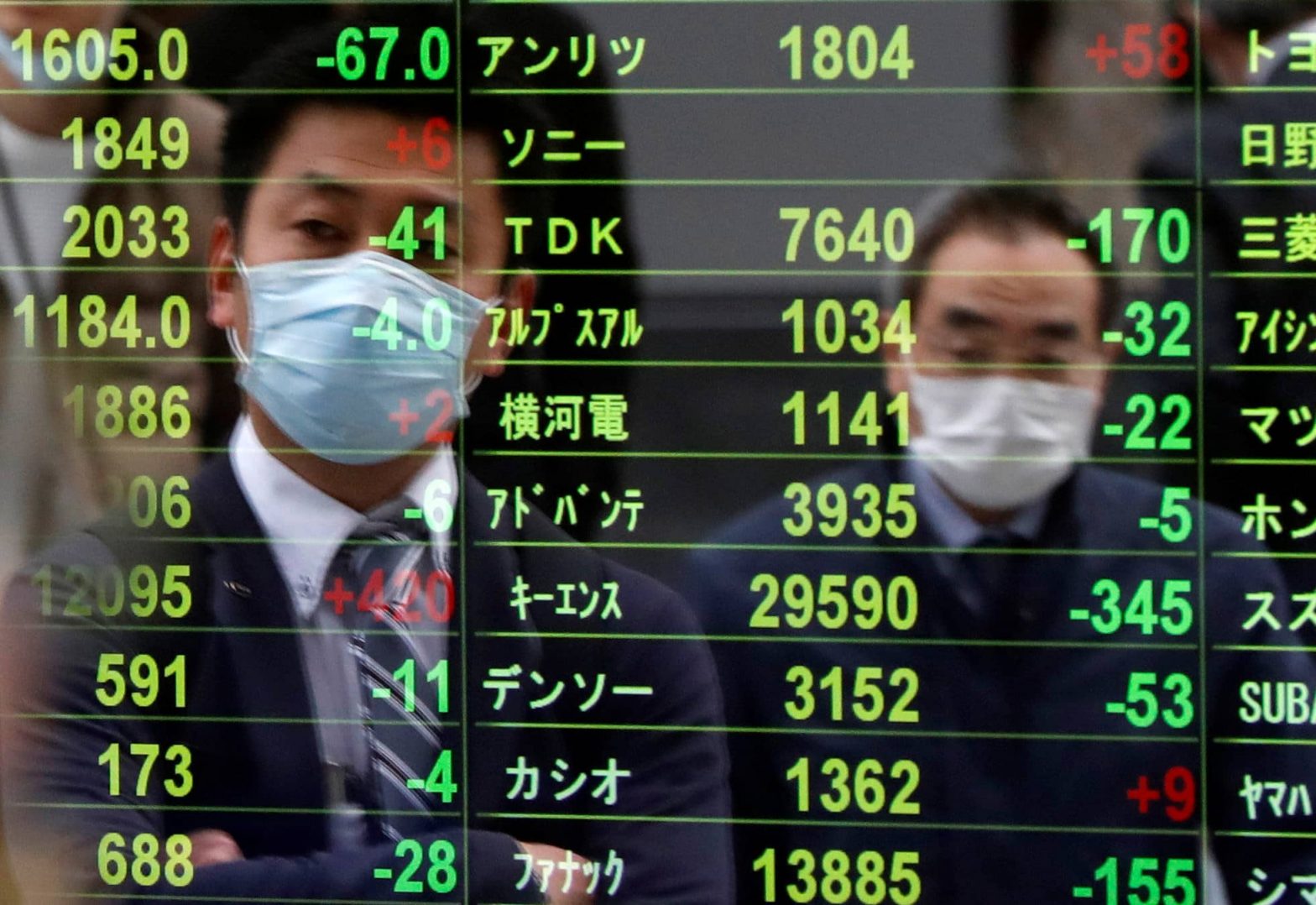Passersby wearing protective face masks following an outbreak of the coronavirus disease (COVID-19) are reflected on a screen displaying stock prices outside a brokerage in Tokyo, Japan, March 17, 2020.
Issei Kato | Reuters
Asian countries will face three major headwinds in the year ahead, according to Carlos Casanova senior economist, Asia at Swiss private bank UBP.
“We have rising omicron cases. We have priced in slower growth in China at around 5%. And now, the Fed meeting minutes suggest that the pace of the tapering will be faster-than-expected,” he told CNBC “Squawk Box Asia” on Friday, adding that these factors “pose a threat for the region as a whole.”
The U.S. central bank spooked investors last week after minutes of its December meeting signaled members were ready to tighten monetary policy more aggressively than previously expected.
The Federal Reserve indicated it may be ready to start raising interest rates, dial back on its bond-buying program, and engage in high-level discussions about reducing holdings of Treasurys and mortgage-backed securities.
While Asia’s emerging markets are well positioned, they will be more impacted by these factors — especially if the Fed moves aggressively on the policy front, Casanova pointed out.
“There will be a real rate compression between emerging markets in Asia and the U.S,” he said. This may lead to further outflows of bonds in the region, especially from economies that are more vulnerable, he added.
In 2013, the Fed triggered a so-called “taper tantrum” when it began to wind down its asset purchase program. Investors panicked and it triggered a sell-off in bonds, causing Treasury yields to surge.
As a result, emerging markets in Asia suffered sharp capital outflows and currency depreciation, forcing central banks in the region to hike interest rates to protect their capital accounts.
It all depends on how the Fed goes about normalizing its policy in the coming months, Casanova said.
“What we are fighting to avoid is a situation, whereby, they are more proactive in reducing their balance sheet at the same time as they’re implementing three rate hikes in 2022,” he noted, saying that potentially could translate to further outflows from the region and deflationary pressures.
